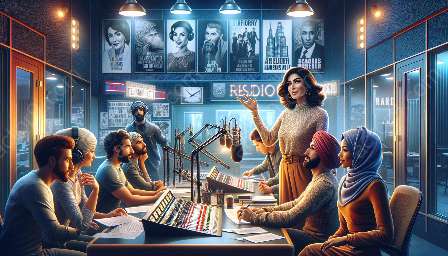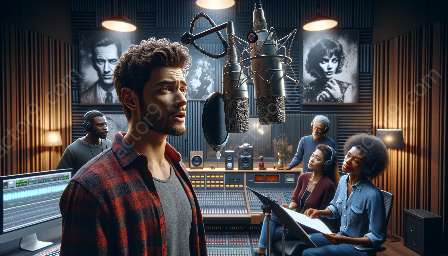Radio drama production and oral storytelling traditions have played a significant role in the art of narrative. This topic cluster will delve into the intricacies of both, exploring their historical significance, modes of production, and the impact on audience engagement. More specifically, it will highlight the importance of understanding the audience in radio drama production and how it contributes to the overall success of a production.
Understanding Audience in Radio Drama Production
Understanding the audience is a critical element in radio drama production. It involves a deep knowledge of the demographics, preferences, and cultural background of the listeners. By understanding the audience, producers can tailor their content to resonate with the target listeners, effectively engaging them and creating a meaningful impact.
Demographics and Preferences
When creating radio dramas, producers must consider the demographics of their audience, including age, gender, location, and socio-economic status. Understanding these factors helps in crafting stories that are relatable and engaging for the target audience. Additionally, understanding the preferences of the audience, such as genre preferences and storytelling formats, enables producers to deliver content that aligns with audience expectations.
Cultural Background
Cultural background is a crucial aspect to consider in radio drama production. Different cultural groups may have unique storytelling traditions, folklore, and oral narrative styles. By understanding the cultural background of the audience, producers can incorporate elements that resonate with their cultural heritage, creating a deeper connection and fostering a sense of inclusivity.
Radio Drama Production
Radio drama production involves the creation and execution of audio-based narratives that are broadcasted through radio channels or online platforms. It encompasses various stages, including scriptwriting, voice acting, sound design, and post-production. The production process is tailored to captivate the audience through compelling storytelling and immersive audio experiences.
Scriptwriting
Scriptwriting is the foundation of any radio drama production. Writers craft the storyline, dialogue, and character development, aiming to create a gripping narrative that will resonate with the audience. The script serves as the blueprint for the entire production process, guiding the voice actors, sound designers, and directors in bringing the story to life.
Voice Acting
Voice actors play a pivotal role in conveying the emotions and depth of the characters in radio dramas. Their performances bring the script to life, engaging the audience through nuanced vocal expressions and believable portrayals of diverse characters. Understanding the audience helps in casting the right voices that resonate with the listeners, enhancing the overall impact of the production.
Sound Design and Post-Production
Sound design and post-production techniques are essential in creating a rich and immersive audio experience for the audience. By employing sound effects, music, and atmospheric elements, producers can transport the audience into the fictional world of the story, amplifying the emotional impact of the narrative. Understanding the audience's preferences and expectations guides the selection of sound elements that resonate with their listening experience.
Oral Storytelling Traditions
Oral storytelling traditions have been prevalent across diverse cultures and societies, serving as a fundamental means of preserving history, sharing knowledge, and entertaining communities. These traditions encompass a myriad of storytelling techniques, including folk tales, myths, legends, and personal narratives, often passed down through generations.
Historical Significance
Oral storytelling traditions have roots in ancient civilizations, where the oral transmission of knowledge and narratives was the primary form of communication. Through storytelling, cultural values, moral lessons, and collective memory were preserved and disseminated across generations, shaping the identity and heritage of communities.
Cultural Diversity
Different cultures have distinct oral storytelling traditions, each reflecting the unique beliefs, customs, and experiences of the respective communities. From the epic narratives of ancient civilizations to the intimate personal stories of indigenous cultures, oral storytelling traditions showcase the rich tapestry of human experiences and values.
Impact on Contemporary Media
The influence of oral storytelling traditions extends to contemporary media, including radio drama production. Many storytelling techniques and narrative structures employed in oral traditions have been adapted in radio dramas, influencing the way stories are crafted and delivered to modern audiences. By understanding the origins and nuances of oral storytelling traditions, producers can infuse authenticity and cultural depth into their radio drama productions, resonating with diverse listeners.






















